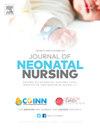Development of integrated monitoring technology for hypothermia and hypoxia in low birth weight infants
Q2 Nursing
引用次数: 0
Abstract
Hypothermia and hypoxia are two conditions that often occur in Low Birth Weight (LBW) infants and can lead to serious complications if not promptly detected and addressed. The aim of the research is to develop a prototype of a medical device that integrates the detection of hypothermia and hypoxia in low birth weight infants. The research method uses a Research and Development approach. (R&D). The development process is carried out through several stages, namely needs analysis, design, development, testing, and evaluation. In the needs analysis stage, data is collected based on the results of previous research and through a literature review to determine the expected specifications of the tool. Next, in the design and development stage, the prototype is designed by integrating temperature sensors and an oximeter, as well as an automatic alarm system that provides early warnings when the baby's vital parameters are outside normal limits. In the initial stage, testing is conducted through simulations. The research results show that the prototype is capable of quickly detecting changes in body temperature and oxygen levels, as well as providing an alarm response to any abnormal changes. In further development, functional testing of the device will be conducted on infants. This device is expected to contribute to the improvement of neonatal care quality and the reduction of infant mortality rates due to complications from hypothermia and hypoxia.
低出生体重儿低温缺氧综合监测技术的发展
低体温和缺氧是低出生体重(LBW)婴儿经常出现的两种情况,如果不及时发现和处理,可能导致严重的并发症。这项研究的目的是开发一种医疗设备的原型,该设备可以检测低出生体重婴儿的体温过低和缺氧。研究方法采用研究与开发方法。(R& D)。开发过程是通过几个阶段进行的,即需求分析、设计、开发、测试和评估。在需求分析阶段,根据先前的研究结果和文献综述收集数据,以确定工具的预期规格。接下来,在设计和开发阶段,原型被设计成集成温度传感器和血氧计,以及一个自动报警系统,当婴儿的重要参数超出正常范围时提供早期预警。在初始阶段,通过模拟进行测试。研究结果表明,该原型能够快速检测体温和氧气水平的变化,并对任何异常变化提供警报反应。在进一步的开发中,该设备的功能测试将在婴儿身上进行。预计该装置将有助于提高新生儿护理质量,并减少因体温过低和缺氧引起的并发症而导致的婴儿死亡率。
本文章由计算机程序翻译,如有差异,请以英文原文为准。
求助全文
约1分钟内获得全文
求助全文
来源期刊

Journal of Neonatal Nursing
Nursing-Pediatrics
CiteScore
2.00
自引率
0.00%
发文量
143
期刊介绍:
Aims & Scope: This is the practical, bimonthly, research-based journal for all professionals concerned with the care of neonates and their families, both in hospital and the community. It aims to support the development of the essential practice, management, education and health promotion skills required by these professionals. The JNN will provide a forum for the exchange of ideas and information between the range of professionals working in this field; promote cooperation between these professionals; facilitate partnership care with families; provide information and informed opinion; promote innovation and change in the care of neonates and their families; and provide an education resource for this important rapidly developing field.
 求助内容:
求助内容: 应助结果提醒方式:
应助结果提醒方式:


